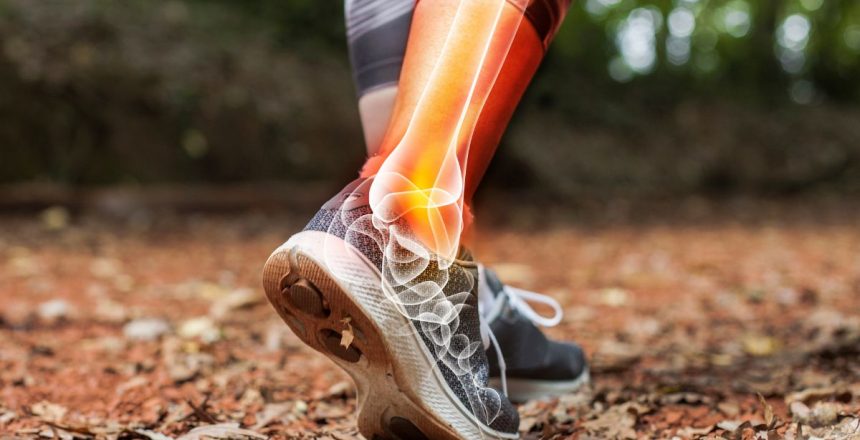Introduction
In the fast-paced world of sports, sports recovery is as crucial as the training itself. Athletes push their limits, and the wear and tear on their bodies demand a focused approach to healing. This blog delves into the complexities of sports recovery, unraveling its importance and the key role it plays in a professional athlete’s journey and physical performance.
Understanding Common Athlete Injuries
Understanding the nuances of sports injuries is crucial for elite athletes, coaches, and healthcare professionals alike. Tailoring recovery strategies to address specific injury types ensures a comprehensive and effective approach to the optimal recovery process in sports.
Sprains and Strains
Sprains: These occur when ligaments, the tough bands connecting bones to each other, are stretched or torn. Common areas for sprains include ankles, knees, and wrists. Athletes in sports requiring sudden stops or changes in direction are particularly prone to sprains.
Strains: Strains affect muscles or tendons, which connect muscles to bones. Overexertion, improper warm-up, or sudden movements can lead to strains. Hamstring and back strains are prevalent among athletes.
Fractures
Fractures, or broken bones, can result from high-impact collisions or falls. Stress fractures, caused by repetitive stress on a bone, are also common in sports with repetitive motions like running. Fractures vary in severity, from hairline fractures that may go unnoticed initially to more severe breaks requiring immediate medical attention.
Dislocations
Dislocations, the displacement of bones from their normal joint positions, typically result from sudden impact or force. Sports with significant upper body engagement, like gymnastics or football, often witness frequent shoulder and elbow dislocations, impacting the athletes’ range of motion.
Concussions
High-impact sports expose athletes to the risk of concussions. These traumatic brain injuries result from blows to the head. Symptoms may range from temporary confusion and headache to more severe cognitive impairments. Proper diagnosis and management are crucial for a safe return to play.
Tendonitis
Tendonitis involves the inflammation of tendons, commonly caused by overuse or repetitive movements. Sports requiring repetitive motions, like tennis or golf, increase the risk of developing tendonitis. Common areas affected include the elbows, shoulders, and knees.
Contusions (Bruises)
While considered minor, contusions or bruises are prevalent in sports with physical contact. Impact or trauma leads to bleeding beneath the skin, causing discoloration and swelling. While often not severe, repeated contusions can impact performance and require attention.
Overuse Injuries
Overuse injuries result from repetitive stress on a particular part of the body without sufficient time for recovery. Conditions like stress fractures, tendinopathy, and stress reactions are common examples. Athletes engaged in endurance sports or repetitive motions are susceptible to overuse injuries.
The Role of Physical Therapists in Sports Recovery
Expert Guidance
Physical therapists are unsung heroes in an athlete’s journey. Their expertise in understanding biomechanics and the human body allows them to create personalized recovery plans, ensuring athletes regain strength and mobility.
Customized Treatment Plans
Generic approaches don’t cut it in sports recovery. Physical therapists tailor their strategies based on the type and severity of injuries, ensuring a holistic and effective rehabilitation process.
Benefits of Sports Recovery Therapy
Injury Prevention
Preventing injuries is as vital as recovering from them. Sports recovery therapy prioritizes strengthening vulnerable areas, reducing the risk of future injuries, and unlocking the amazing benefits of effective recovery from exercise. Additionally, incorporating tools like compression garments can further enhance the recovery process.
Athlete Injury Management and Rehabilitation
When injuries occur, swift and effective management is crucial. Recovery therapy aids in rehabilitation, guiding high-performing athletes back to peak performance safely and minimizing the overall recovery period. The efficacy of these methods is supported by substantial scientific evidence, ensuring a well-founded approach to sports recovery.
Performance Enhancement
It’s not just about bouncing back; it’s about coming back stronger. Sports recovery therapy enhances overall athletic performance, giving athletes a competitive edge. Strength and conditioning specialists should provide health care providers with precise, measurable data to indicate performance trends, either improvement or lack of progress, over time.
Injury Risk Assessment
Regular assessment of an athlete’s condition helps in identifying potential risks, allowing for proactive measures to prevent muscle injuries before they occur. This approach enhances overall well-being, promoting optimal performance, efficient blood flow to crucial muscle groups, and ensuring proper recovery after strenuous physical activities.
Rehabilitation Support and Education
Physical therapists assist athletes in recovering strength, mobility, and functionality post-injury using hands-on techniques, therapeutic exercises, and specialized modalities.
The focus of physical therapy is on fostering a secure and effective recovery by identifying root causes, correcting movement imbalances, and tailoring interventions to elevate the athlete’s fitness level.
This comprehensive approach extends to optimizing muscle recovery, ensuring athletes regain peak performance with minimized downtime and enhancing their overall level of performance.
Why Should You Consider Auto-ness Physical Therapy for Sports Recovery Therapy?
Numerous sports lead to common muscular and bone injuries. Annually, with over 30 million teens and young adults engaging in athletics, there are 3.5 million recorded injuries.
At Auto-ness Physical Therapy, we excel in the realm of sports recovery, specializing in the rehabilitation of athlete injuries. Our team, comprising skilled physical therapists, is committed to delivering top-notch care.
Combining expertise with a personalized approach, we are your dedicated partners in the journey toward optimal athletic performance and athlete recovery.. Trust us, your reliable sports recovery center, to guide you through the intricacies of sports recovery, ensuring a tailored and effective path to your peak physical well-being.
Conclusion
Sports recovery isn’t just a luxury; it’s a necessity. Prioritizing recovery ensures athletes have the longevity and resilience needed to excel in their respective fields. Embrace sports recovery therapy as a fundamental pillar in your athletic journey, and watch yourself recover stronger, perform better, and stay in the game.
FAQs
Q1: How long should the recovery period be after intense exercise or competition?
A1: The optimal recovery period varies based on exercise intensity and individual factors. Generally, allowing 24 to 48 hours between intense sessions is recommended to give the body time to promote effective recovery. This downtime is crucial in reducing muscle pain and providing necessary pain relief after rigorous physical activity.
Q2: Can sports recovery therapies benefit non-athletes or recreational exercisers?
A2: Yes, sports recovery therapies offer numerous benefits to individuals of all fitness levels, promoting an active lifestyle. They can aid in preventing injuries, reducing soreness after exercise, and enhancing overall well-being after physical activity. Incorporating various healing modalities, these therapies contribute to a holistic approach to recovery, keeping the body healthy and resilient.
Q3: Is there a specific diet or nutrition plan recommended for sports recovery?
A3: Nutrition plays a vital role in sports recovery, contributing to a healthy lifestyle. Consuming a balanced diet emphasizing protein, carbohydrates, and hydration supports muscle repair and replenishes energy stores, yielding positive effects on overall physical well-being.
Additionally, proper nutrition aids in the elimination of metabolic waste products, promoting efficient recovery after physical activity. Carbohydrates, in the form of glycogen, play a key role in restoring energy levels during the recovery process.


